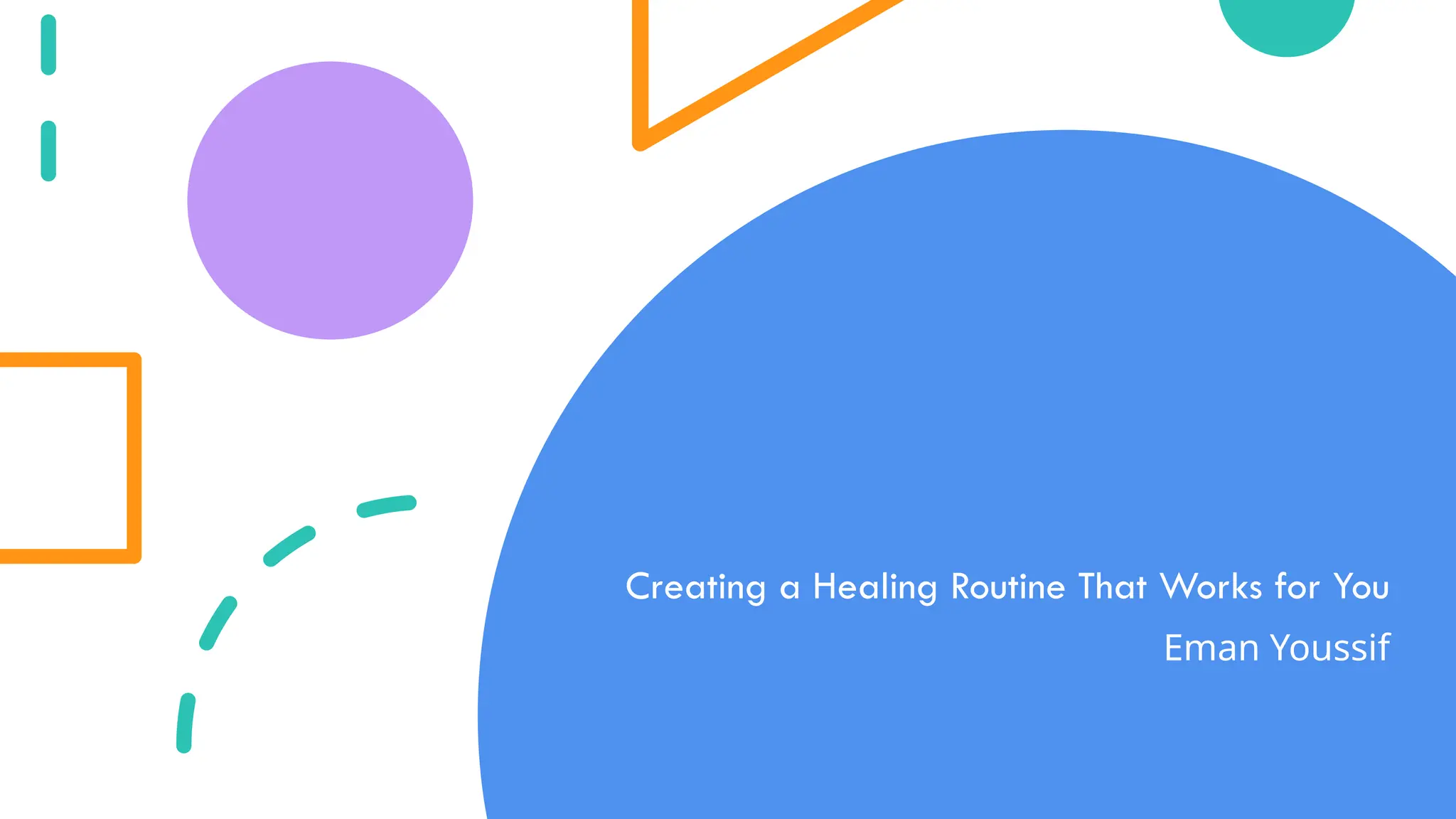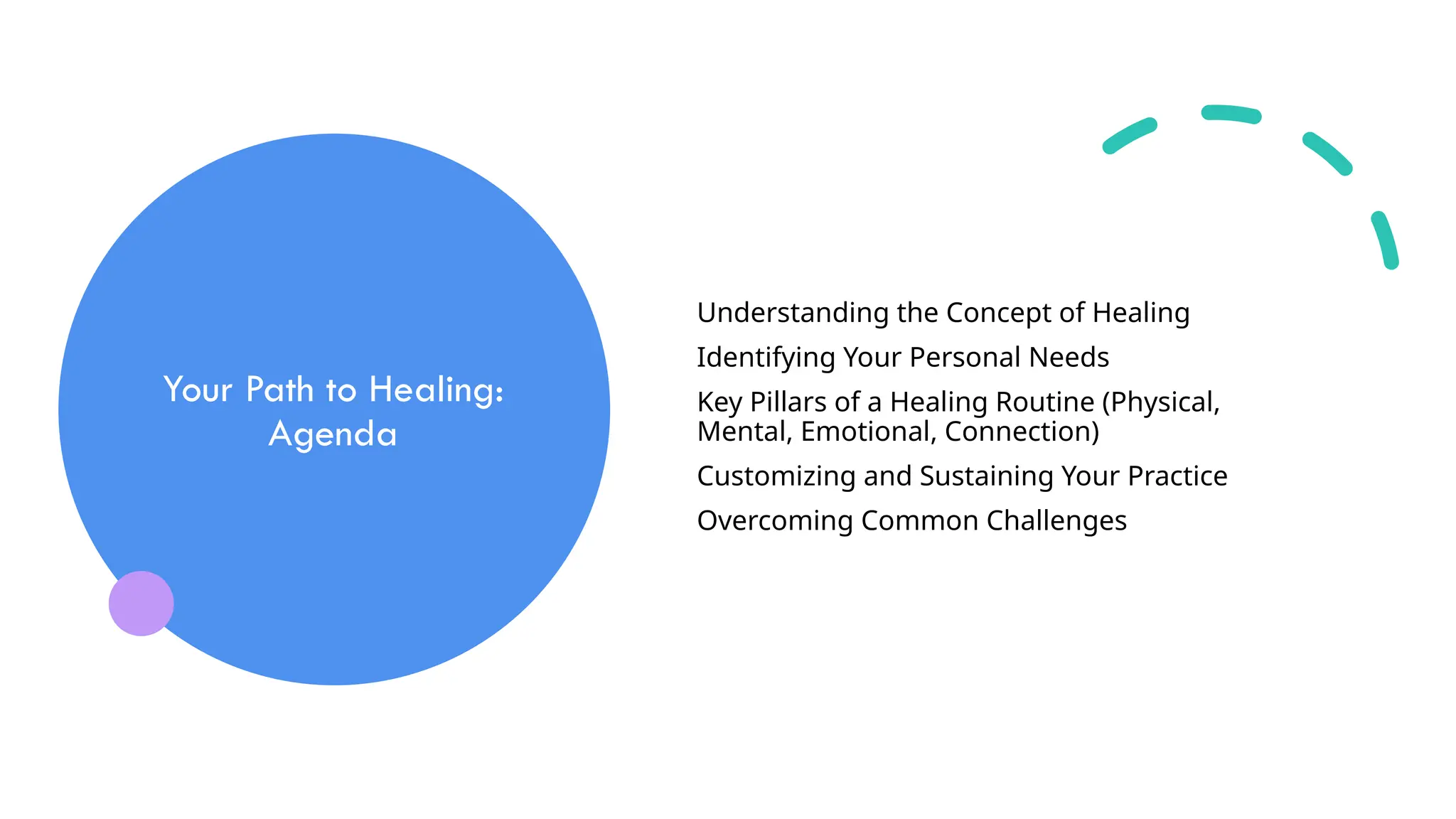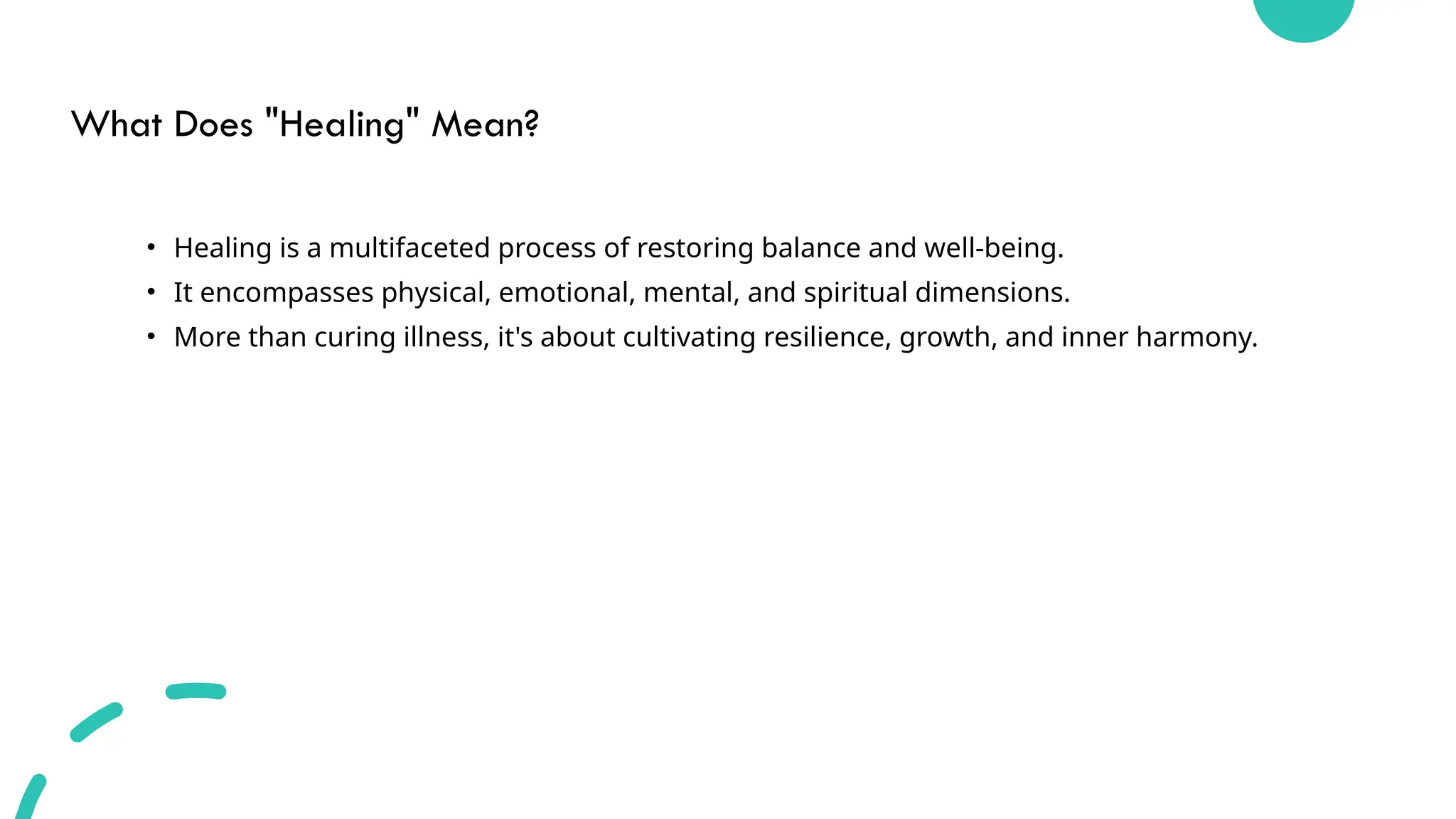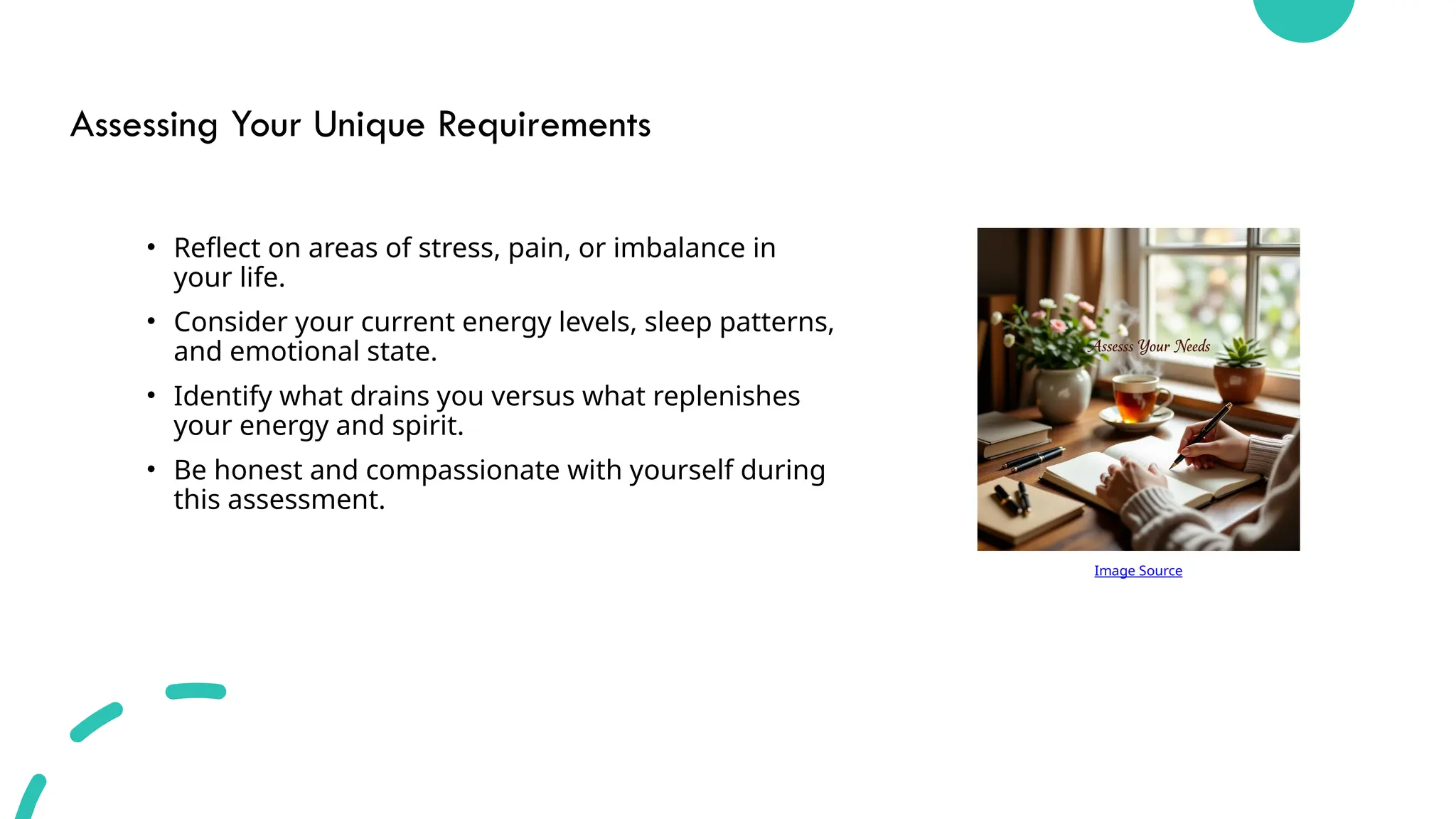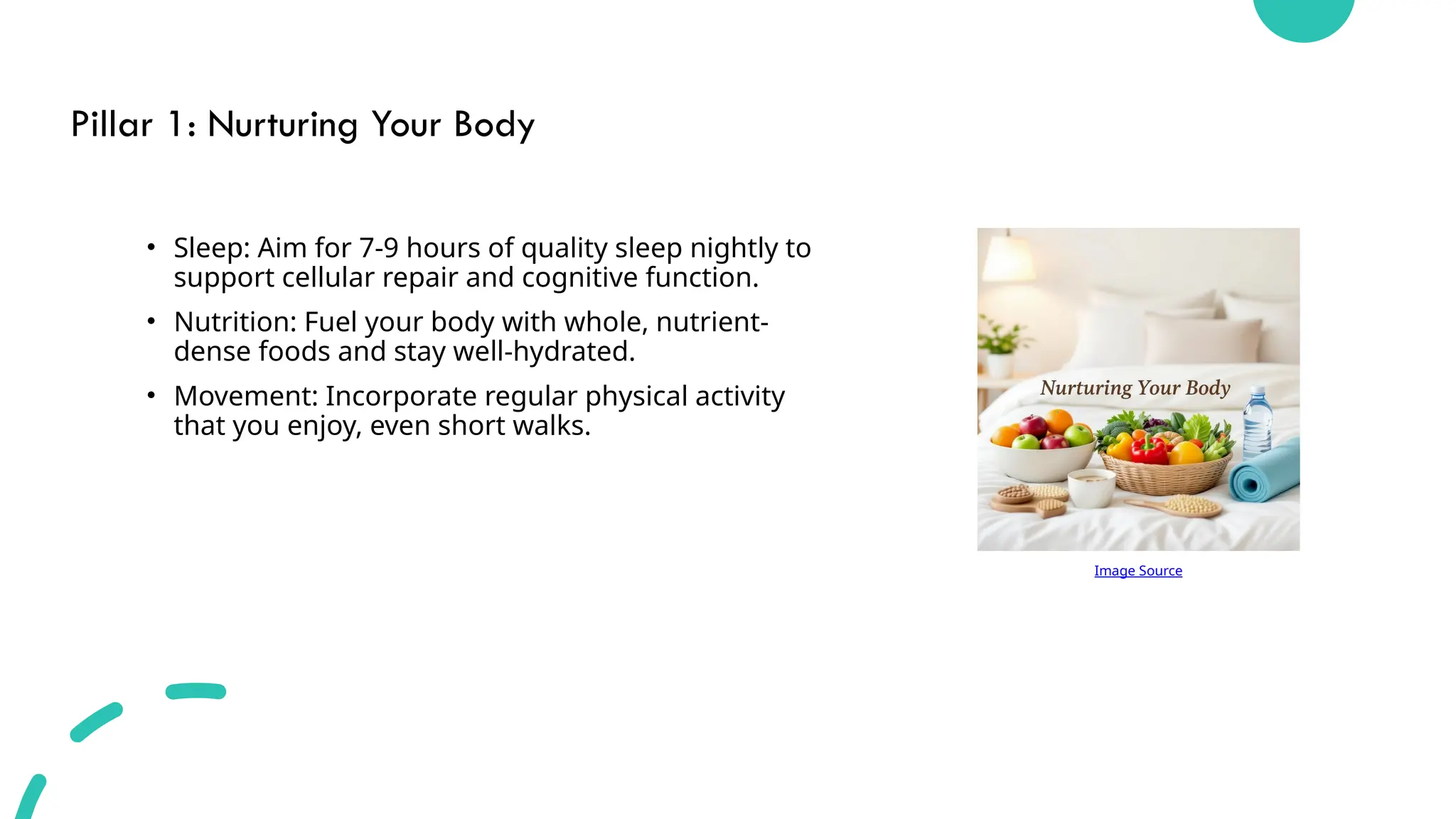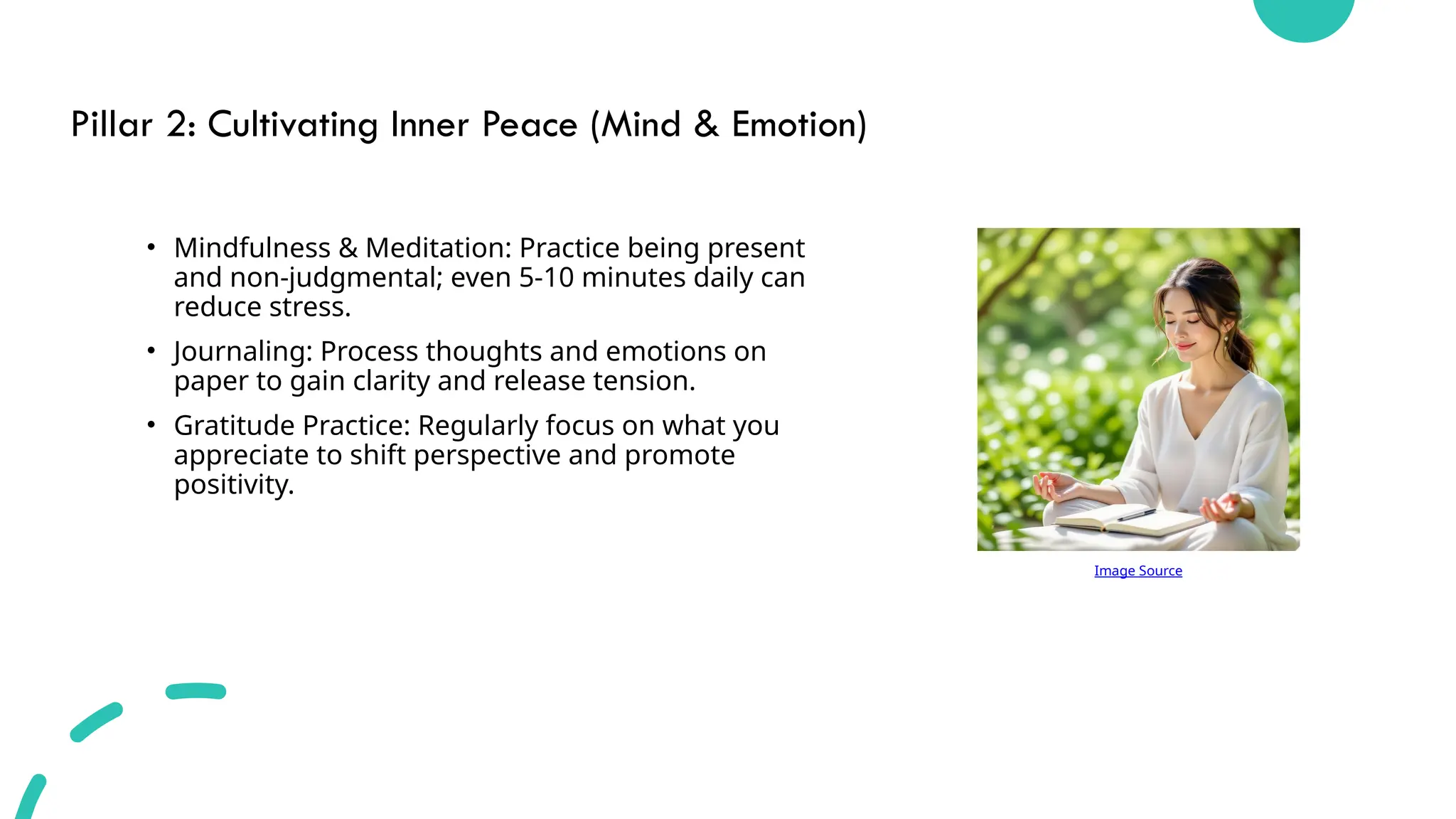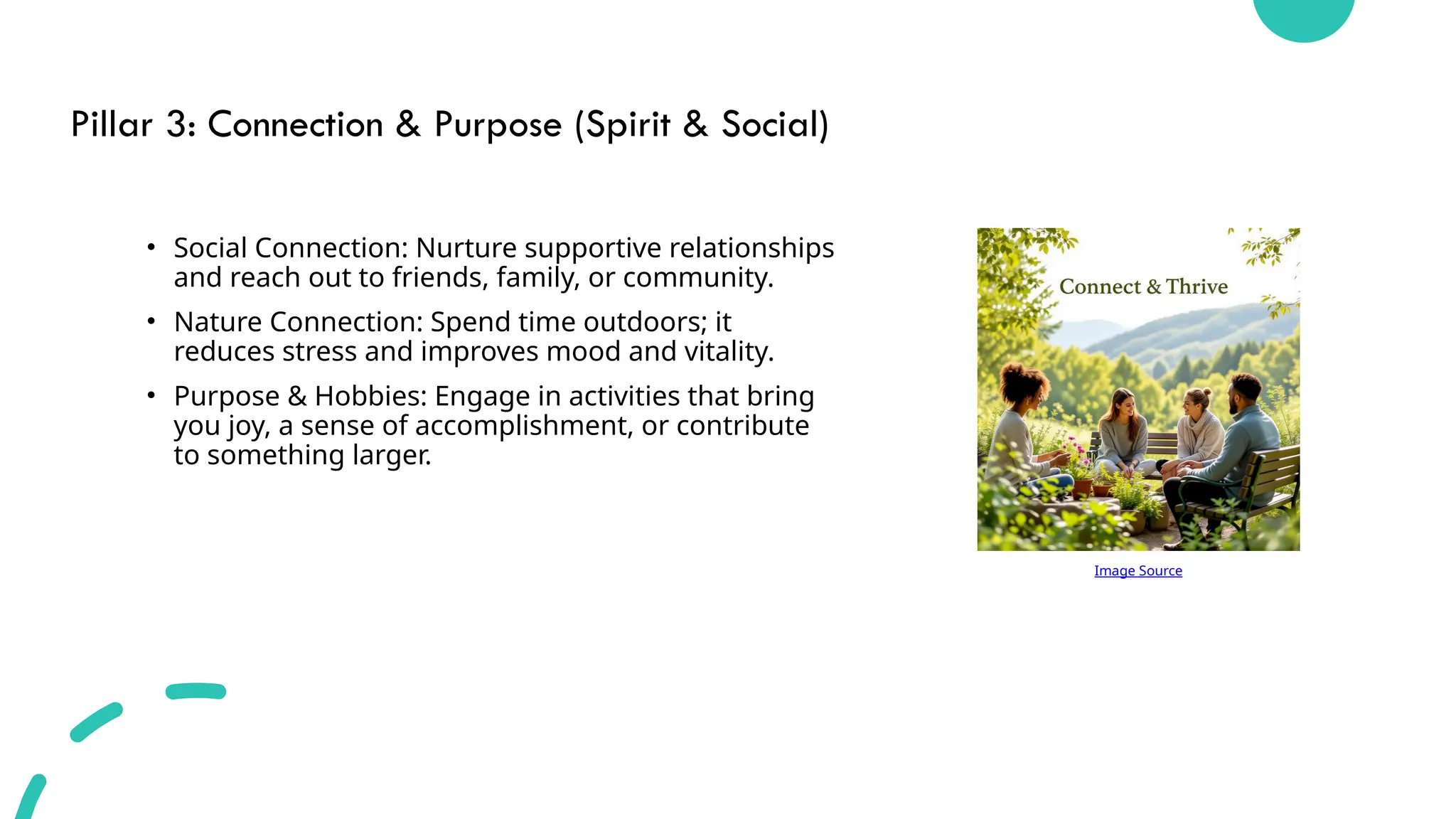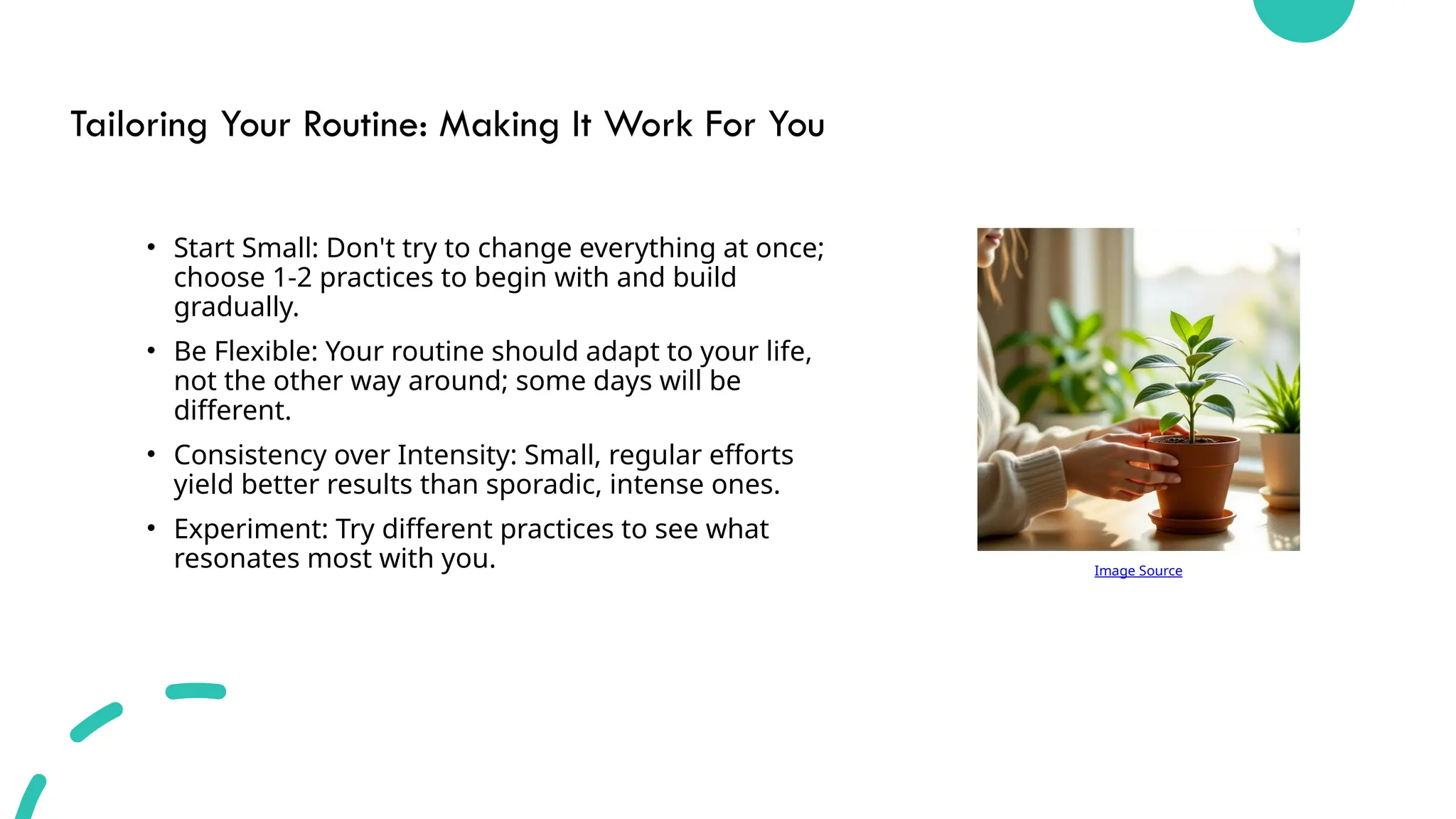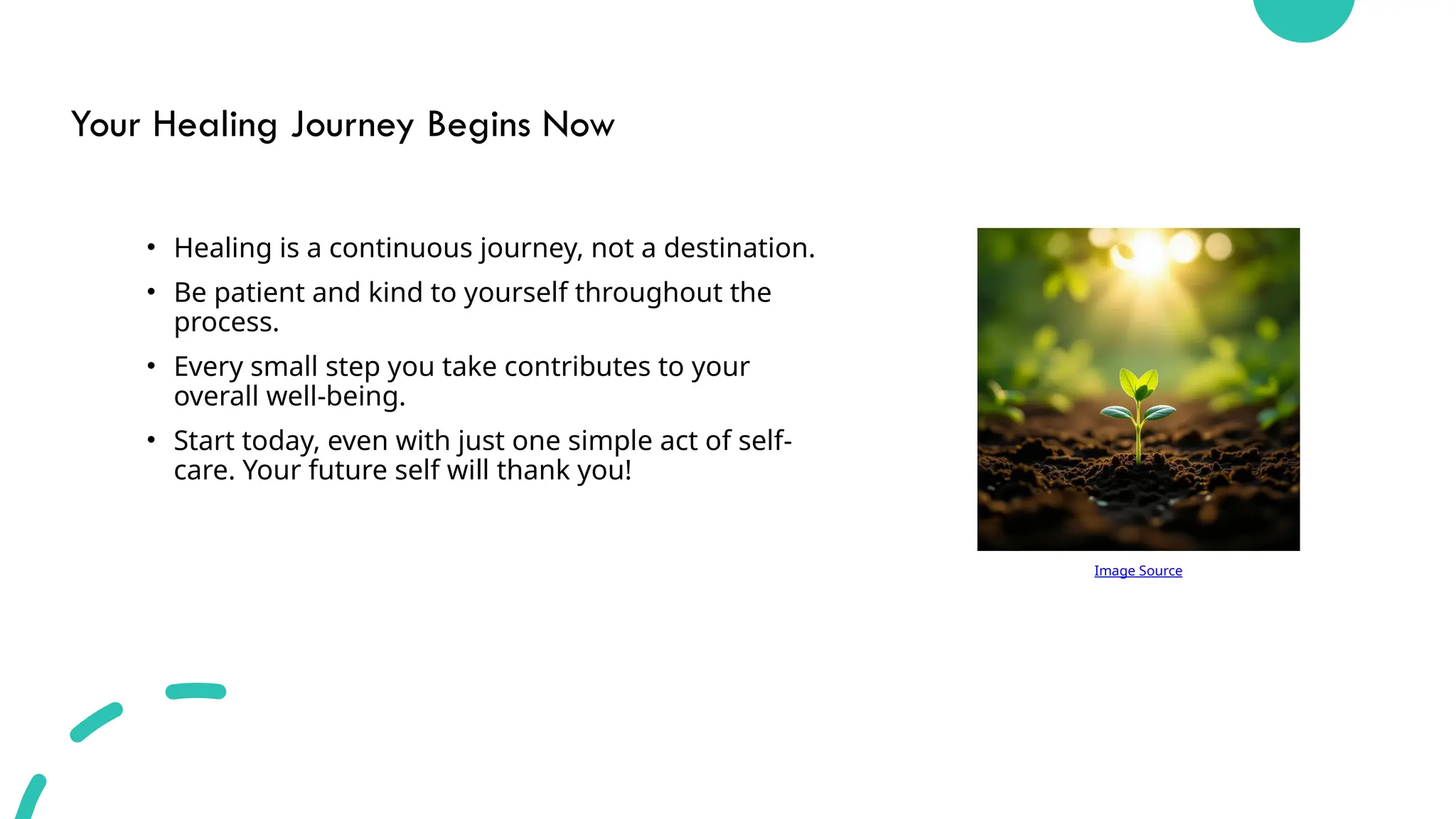introduces a personalized daily healing routine designed to support your emotional, mental, and spiritual well-being. By combining mindful practices such as journaling, breathwork, affirmations, movement, and creative expression, you’ll learn how to create a consistent rhythm of self-care and inner alignment. This routine is not about rigid habits—it’s about building nurturing rituals that help you release stress, process emotions, and stay grounded in your healing journey. A healing routine becomes your safe space—a daily act of self-love that gently restores balance and empowers long-term growth.
